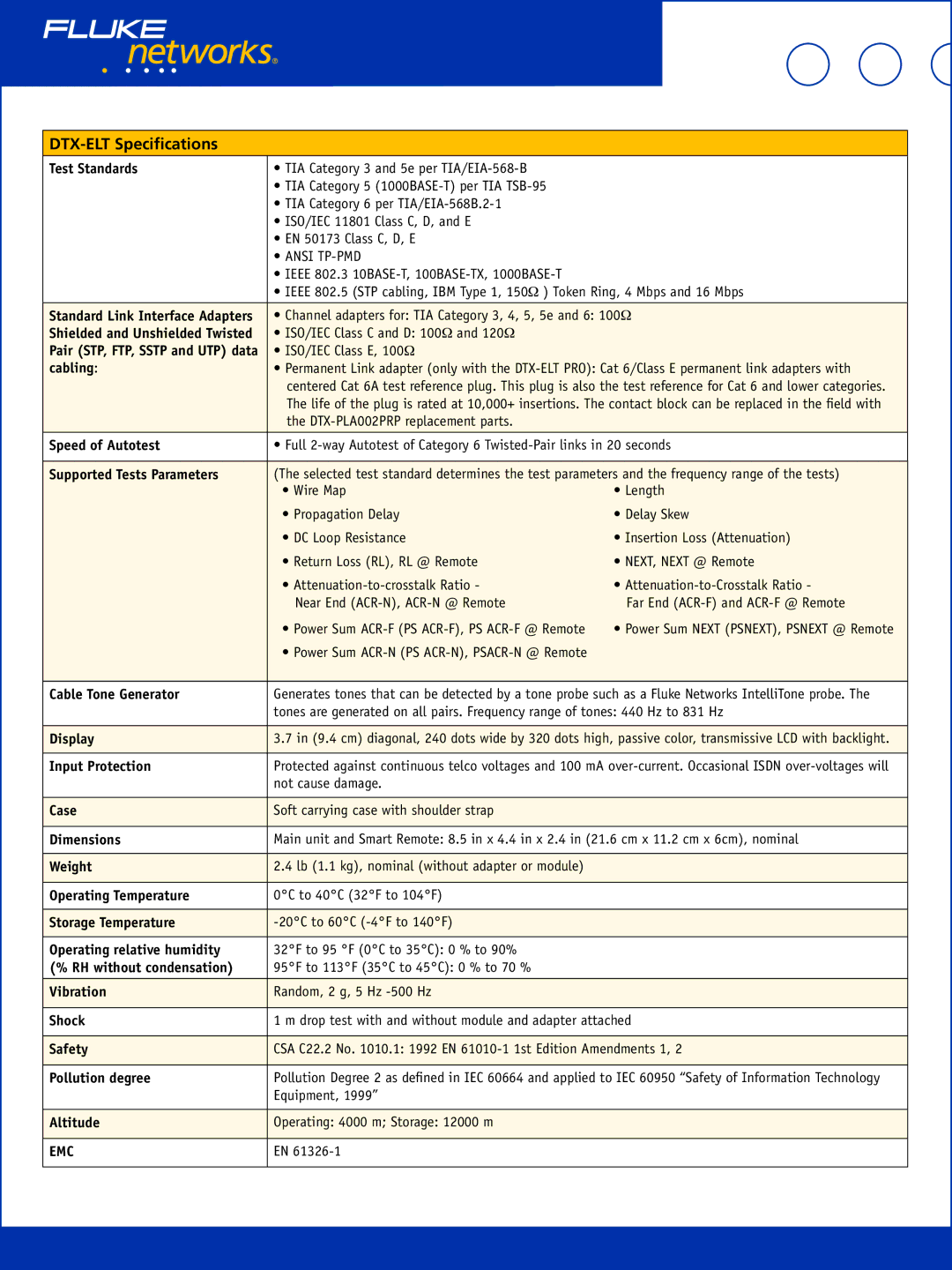DTX-ELT specifications
The Fluke DTX-ELT (Ethernet Cable Tester) is a specialized tool designed to provide reliable testing and certification for Ethernet cabling systems. As the demand for high-speed data networks increases, the need for precise and effective testing solutions has become paramount. The DTX-ELT caters to this need by integrating advanced features and technologies that make networking professionals' jobs easier and more efficient.One of the main features of the DTX-ELT is its ability to conduct comprehensive tests on all types of copper cabling, including twisted pair and coaxial. The device supports multiple testing standards such as Category 5e, 6, 6A, and 7, enabling users to verify the integrity of their installations up to 10 Gbps speeds. This versatility is crucial for technicians who need to ensure that their network installations meet current and future bandwidth requirements.
The performance testing capabilities of the Fluke DTX-ELT are further enhanced by its use of Time Domain Reflectometry (TDR) technology. TDR allows the tester to accurately pinpoint cable faults, such as breaks, shorts, and mismatches, providing users with real-time diagnostics that facilitate quicker troubleshooting. The graphical representation of results gives users a clear understanding of the cable condition and helps in making informed maintenance decisions.
Another notable characteristic of the DTX-ELT is its user-friendly interface, which enables technicians to navigate through various testing options with ease. The large, backlit display provides clear readouts and simplifies the interpretation of results. Additionally, the device includes automated reporting features that reduce the time taken to compile test data, allowing technicians to focus more on their core responsibilities.
Moreover, the Fluke DTX-ELT supports the Fluke Networks LinkWare software, which offers powerful data management and reporting capabilities. This integration allows users to generate detailed test reports, track installation quality, and monitor performance over time. The device has a rugged design and is built to withstand the rigors of fieldwork, ensuring reliability even in challenging environments.
In summary, the Fluke DTX-ELT stands out as an industry-leading Ethernet cable testing solution that combines advanced testing technologies, user-friendly functionality, and robust reporting capabilities. It is an essential tool for networking professionals aiming to deliver high-quality installations that meet the demands of modern data networks.

